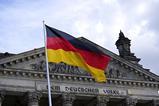Swiss pension funds have returned 2.57% in the first quarter of 2023, a positive performance resulting in a slight increase of the funding ratio for private schemes to 107.8%, compared with 105.6% in Q4 2022, according to the Pensionskassen Monitor published by Swisscanto last week.
Almost all asset classes contributed to the positive performance, including Swiss bonds with 1.4%, foreign bonds with 1.7%, Swiss equities with 5.9%, and foreign equites with 6.4%. Hedge funds and commodities, instead, returned -1% and - 6.6%, respectively, according to the study.
Fully funded Swiss public pension funds saw their funding ratio increasing in Q1 2023 to 98.9%, compared with 96.7% in Q4 2022. The funding ratio of partially funded public pension funds also progressed to 81.5% in Q1, compared with 79.9% in Q4, according to Swisscanto.
The decline in terms of reserves for private pension schemes stopped in the first quarter, after an historically difficult year for investment, but the target average value of 18% of fluctuation reserves has not been reached by most schemes, the study added.
It also revealed that 27.2% of private pension funds (previous quarter 20.6%) and 8.3% of public schemes (unchanged from the previous quarter) have reaqched a funding ratio of more than 115%.
Additionally, 9.6% of private pension funds are underfunded now, compared to 16.1% in the past quarter, while 22.2% (previous quarter 44.4%) of the fully funded public pension funds, and 87.5% (previous quarter 91.6%) of partially funded public schemes have still recorded an underfunded position.
Swiss fund market recovers
The Swiss fund market saw asset volumes increasing in the first quarter of this year to CHF1.37trn, from CHF1.32trn at the end of 2022, according to figures published by the Asset Management Association Switzerland (AMAS) last week.
The increase was led by the performance of equity funds (5.7%), and an overall market performance of 2.9%, or CHF37.7bn. Net inflows amounted to CHF10.4bn in Q1, compared with total outflows of CHF9.5bn in 2022.
Equity funds have recorded the highest amount of net inflows this year at CHF6.2bn, followed by money market funds with CHF3.7bn, and bond funds with CHF2.1bn. Commodity funds suffered outflows of CHF582m, alternative funds of CHF466m and real estate funds of CHF154m. Alternative funds and real estate funds experienced a slight decline in performance, by 1.1% and 0.8%, respectively, in Q1.
Adrian Schatzmann, managing director of AMAS, said: “Inflation fears in the market have eased, leading to a resurgence of investor confidence despite industry turmoil. Particularly pleasing is the noticeable net inflows, which also reflect an increasing risk appetite.”
UBS continues to have the largest market share among fund providers in Switzerland with 25.8%, followed by Credit Suisse with 13.9%, and Swisscanto with 10.1%, but with the takeover of Credit Suisse by UBS the market structure will change significantly, the association said.
German lifeboat scheme records negative net income
The Pensions-Sicherungs-Verein VVaG (PSVaG), the mutual insurance association for German occupational pension schemes, recorded negative net income from capital investments of -€279m last year, according to its annual financial statement.
This includes write-downs of €329.6m, of which €315.5m relate to temporary losses in the market value of bearer instruments in direct portfolios due to rising interest rates, and €14.1m to investment certificates, it added.
It is investing 3% of the assets totaling almost €8.3bn in bank deposits, 34% in bonds and promissory notes, 39% in investment fund units, and 24% in bearer bonds.
The lifeboat scheme allocated €206m to provisions for rebates to reduce contributions for 2023, and €57m was transferred to the compensation fund totalling €3.3bn. It has also allocated €4.5bn to cover obligations up until 31 December 2022 for outstanding insurance claims.
The number of members grew further last year, from approximately 99,400 to around 101,300 as a result of the newly-introduced insolvency cover for pension commitments via Pensionskassen.
The number of insolvency cases seeing the involvement of PSVaG in 2022 fell by 8% year-on-year to 275, affecting 14,200 beneficiaries. The volume of claims also fell to €582m.
PSVaG guaranteed private-sector occupational pension provision in Germany to cover almost 14 million pension commitments.
The latest digital edition of IPE’s magazine is now available

















No comments yet